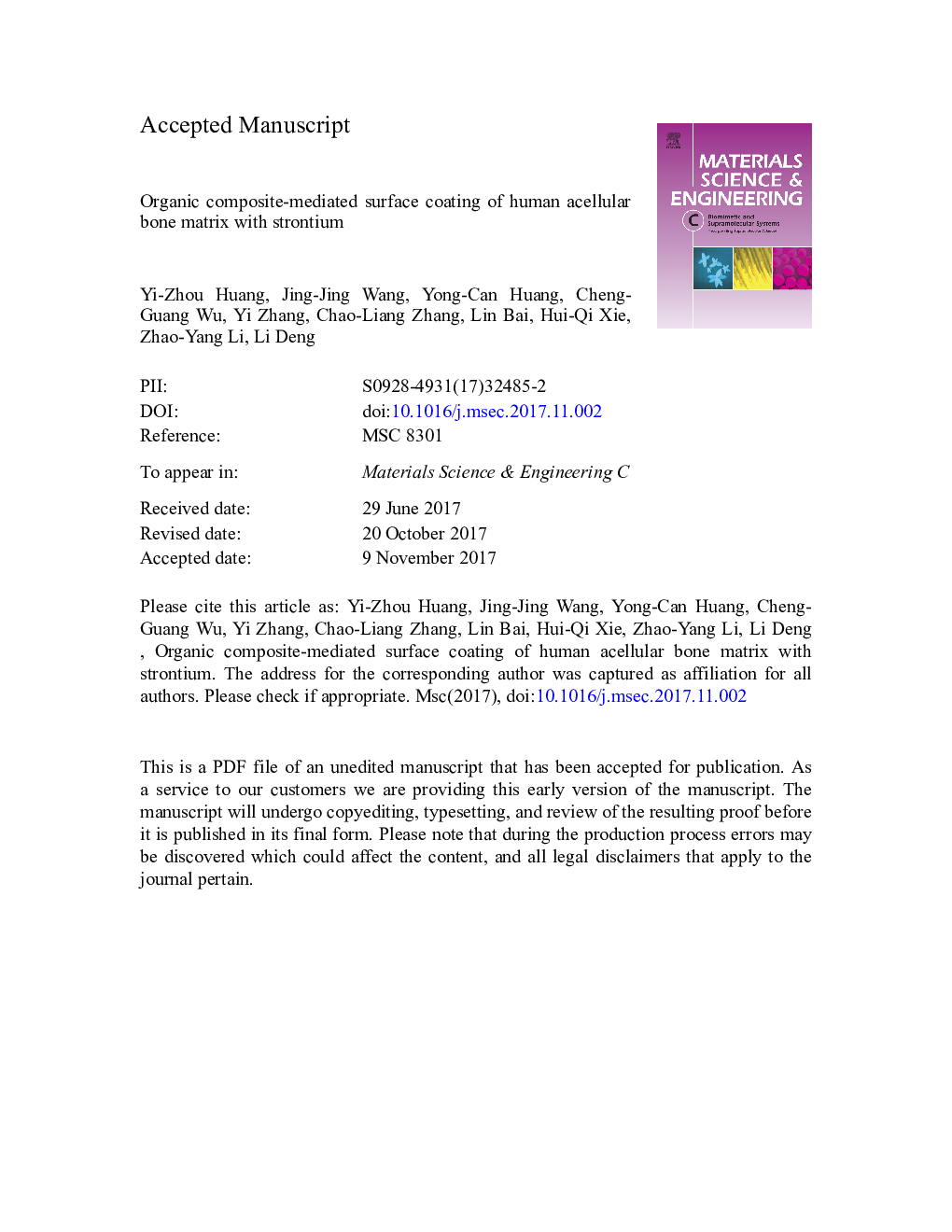| Article ID | Journal | Published Year | Pages | File Type |
|---|---|---|---|---|
| 7866574 | Materials Science and Engineering: C | 2018 | 36 Pages |
Abstract
Acellular bone matrix (ACBM) provides an osteoconductive scaffold for bone repair, but its osteoinductivity is poor. Strontium (Sr) improves the osteoinductivity of bone implants. In this study, we developed an organic composite-mediated strontium coating strategy for ACBM scaffolds by using the ion chelating ability of carboxymethyl cellulose (CMC) and the surface adhesion ability of dopamine (DOPA). The organic coating composite, termed the CMC-DOPA-Sr composite, was synthesized under a mild condition, and its chemical structure and strontium ion chelating ability were then determined. After surface decoration, the physicochemical properties of the strontium-coated ACBM (ACBM-Sr) scaffolds were characterized, and their biocompatibility and osteoinductivity were determined in vitro and in vivo. The results showed that the CMC-DOPA-Sr composite facilitated strontium coating on the surface of ACBM scaffolds. The ACBM-Sr scaffolds possessed a sustained strontium ion release profile, exhibited good cytocompatibility, and enhanced the osteogenic differentiation of mesenchymal stem cells in vitro. Furthermore, the ACBM-Sr scaffolds showed good histocompatibility after subcutaneous implantation in nude mice. Taken together, this study provided a simple and mild strategy to realize strontium coating for ACBM scaffolds, which resulted in good biocompatibility and improved osteoinductivity.
Related Topics
Physical Sciences and Engineering
Materials Science
Biomaterials
Authors
Yi-Zhou Huang, Jing-Jing Wang, Yong-Can Huang, Cheng-Guang Wu, Yi Zhang, Chao-Liang Zhang, Lin Bai, Hui-Qi Xie, Zhao-Yang Li, Li Deng,
